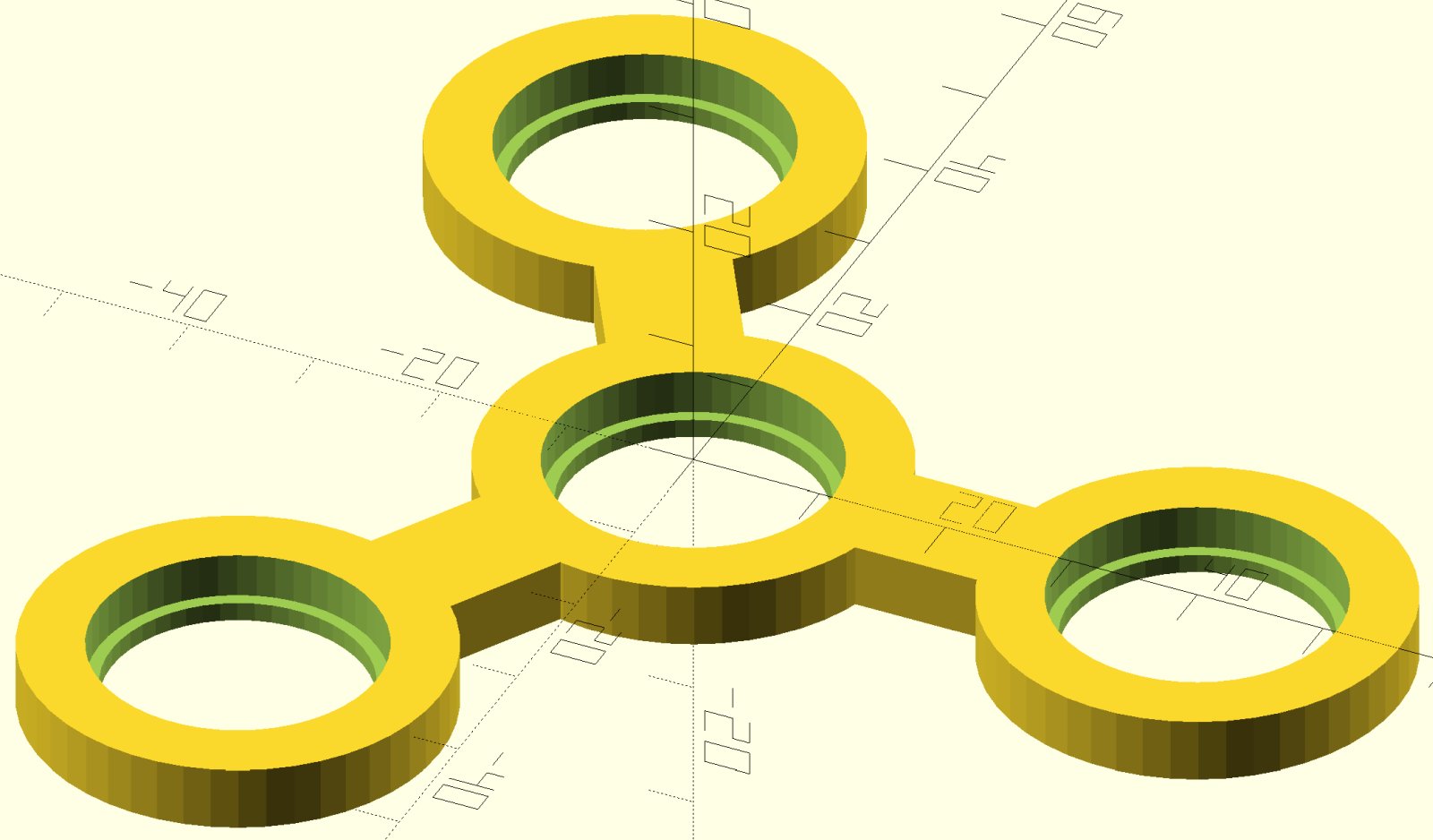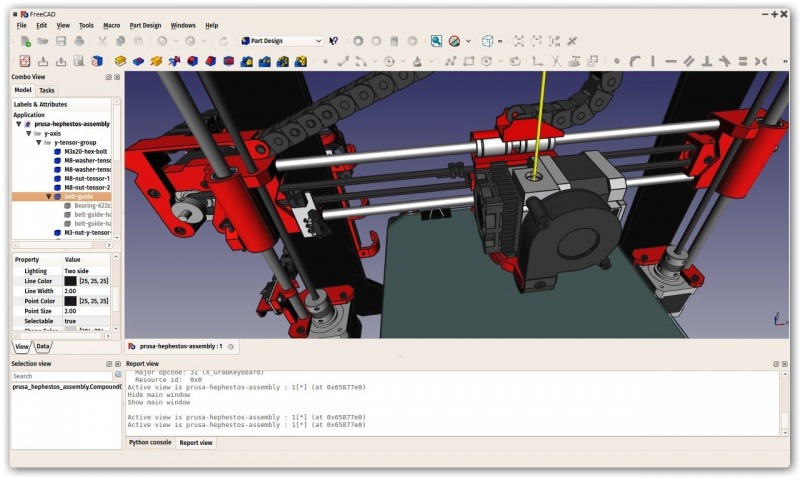


FreeCAD: Traditional Modeling Alternative
OPENSCAD FREECAD SOFTWARE
For those who already have experience with another CAD software or a 3D modeling software like Blender, then this will be familiar territory. Practically speaking, this means that when working with FreeCAD you will be modifying things like faces, edges, and vertices and be using more complicated modeling operations, like extruding a surface outward. BREP technically has more complex and flexible operations available, such as: Instead of only combining primitive shapes using operations, BREP allows the editing of topology in addition to geometry. This is the same or very similar to methods used by most other CAD software and other 3D modeling software in general. In practical terms, this means that during modeling, you’ll be building complex shapes by combining a tree of other shapes using operations like intersections and differences.įreeCAD on the other hand primarily uses a method called Boundary Representation, or BREP for short. It builds complex shapes by using a combination of different operations, which we’ll talk more about in its section. Essentially, it works by building complex geometry using “primitive” shapes, like:

OpenSCAD uses a technique called constructive solid geometry, or CSG for short. Their design philosophies differ and that affects their goals and development choices. Different Design Philosophiesīefore we even begin talking about their exact features and shortcomings, you should know that they have many differences just at a core level. While they accomplish the same goal in principle, they actually have many differences and it’s not as easy as just saying one is better than the other. Two of the most prominent are FreeCAD and OpenSCAD.
OPENSCAD FREECAD LICENSE
The landscape has changed in modern times, and while AutoCAD still costs nearly $1,500 a year for a professional license there are a plethora of other free, open source CAD software. For a long time, if you wanted to make use of CAD programs you had to buy into licensing fees that could easily get into the thousands of dollars. This converts the triangle / polygon mesh from an STL file into SVG paths, shading them based on their angle away from the Z axis, and displaying in Z order based on the centre point of each polygon.CAD or Computer Aided Design programs have been around for a while, with famous programs like AutoCAD being as old as the early 80’s.
OPENSCAD FREECAD ARCHIVE
Sent from the OpenSCAD mailing list archive at. If you want a different angle, you'll need to pre-rotate the model before creating the STL file.Īnd here's the image put through my converter script, with fill and stroke modified in Inkscape to be B+W: To simplify the code, it assumes that the viewpoint is from directly above, with no perspective transformations (i.e. Some cleanup may be required due to triangles where the centre point doesn't match the ideal print order. This converts the triangle / polygon mesh from an STL file into SVG paths, shading them based on their angle away from the Z axis, and displaying in Z order based on the centre point of each polygon. Just in case it helps, I've created an STL to SVG perl script:


 0 kommentar(er)
0 kommentar(er)
